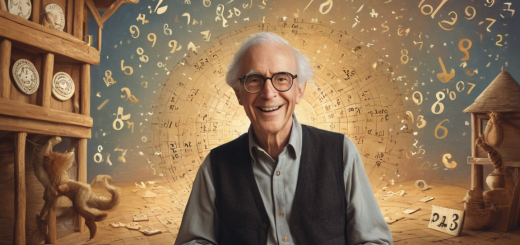The Pioneering Story of Ada Lovelace: The World’s First Computer Programmer
The Enchantress of Numbers: Ada Lovelace
Ada Lovelace, a countess and mathematician, has been revered as the world’s first computer programmer. Born on December 10, 1815, as Augusta Ada Byron, she was the only legitimate child of the famous poet Lord Byron and his wife, Anne Isabella (Annabella) Milbanke, Lady Wentworth. Despite her noble birth, it’s her intellectual legacy that continues to capture the imagination of technologists and historians alike.
Early Life and Education
 Ada’s mother, Annabella, holding a staunch belief in education, especially in mathematics and the sciences which was unusual for women in the 19th century, ensured that Ada received an extensive education in these areas. Under the tutorship of Mary Somerville, a noted researcher and scientific author of the time, Ada’s passion for numbers and logic flourished.
Ada’s mother, Annabella, holding a staunch belief in education, especially in mathematics and the sciences which was unusual for women in the 19th century, ensured that Ada received an extensive education in these areas. Under the tutorship of Mary Somerville, a noted researcher and scientific author of the time, Ada’s passion for numbers and logic flourished.
Introduction to Charles Babbage
At seventeen, Ada was introduced to Charles Babbage, the Lucasian Professor of Mathematics at the University of Cambridge. Babbage was in the process of designing the Difference Engine, a mechanical forerunner of the modern computer, designed to compute complex mathematical calculations. Ada was captivated by Babbage’s inventions and the prospect of ‘poetical science’ as she termed it.
Involvement with ‘The Analytical Engine’
Babbage later conceived the Analytical Engine, an early conceptualization of a general-purpose computer. Ada saw the potential in this invention well beyond mere calculation. In 1843, she translated an article on the Analytical Engine from Italian mathematician Luigi Federico Menabrea, supplementing it with her own set of notes that was three times as long as the original work. These notes contained what many consider the first algorithm intended to be processed by a machine, making her to be recognized as the world’s first computer programmer.
Ada’s Vision
 Ada’s contribution went beyond mere translation and annotation; she foresaw the immense potential of computing machines. She predicted that they could one day manipulate symbols of any kind and not just numbers, even speculating that they could be used to create music and art, an idea that presaged our current digital age by over a century.
Ada’s contribution went beyond mere translation and annotation; she foresaw the immense potential of computing machines. She predicted that they could one day manipulate symbols of any kind and not just numbers, even speculating that they could be used to create music and art, an idea that presaged our current digital age by over a century.
Legacy and Recognition
Ironically, Ada’s work was not well known during her modest lifespan, as she died at the young age of 36. It was not until the mid-20th century that her contributions were reevaluated. Today, Ada Lovelace has become an icon of modern computing, celebrated for her pioneering vision. October 13 has been designated as Ada Lovelace Day, commemorating her achievements and encouraging women to pursue careers in STEM fields.
Conclusion: An Ongoing Inspiration
The story of Ada Lovelace is not just a tale of historical achievement but also a continuing source of inspiration. Her keen intellect and imaginative leap into a future dominated by computing serve as a beacon for young scientists and budding programmers around the globe. May we all harness the ‘poetical science’ within us to envision and realize a future full of imagination and innovation.
Interested in learning more about Ada Lovelace and her contributions to computing? Leave a comment below or share this article to spark a conversation!






